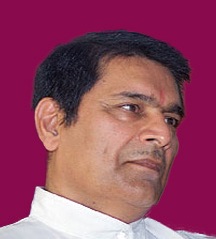From a satsang with Pt. Balram Persad, Spiritual Leader, Om Shakti Mandali
Hinduism provides us with many auspicious occasions to analyse, rededicate and recommit ourselves to the spiritual goals and ideals set by the sages and scriptures. We are, after all, divine beings with human forms. While the form is important, the essence within is even more significant. Makar Sankranti is one such occasion. There are 12 sankranti in a year, one in each month. The two most important occur in the months of Margha (January-February) and Chaitra (March-April) in the Hindu calendar. Makar Sankranti marks the northward journey of the sun from the sign Dhanu raasi (Sagittarius) into Makar raasi, Capricorn. Makar is the 10th sign of the zodiac, Capricorn, and this observance occurs in the 11th month of the Hindu calendar. That northward uttarayan journey continues for six months. It is not an actual physical journey by the sun since it is the earth that revolves around the sun. However, it is used in astrological terminology to explain the strengthened influence of the sun on the world’s events. Astronomy teaches us the planet’s position in relation to us; astrology explains the influence of the planet’s positions on the world.
The northward journey of the sun is representative of an internal journey in the individual. As Hinduism tells us, the world on the outside is a reflection of the world inside us. While Makar Sankranti deals with the environment and the planetary positions’ influence on earthly matters, the external transition should also reflect the transition from ignorance to a life of knowledge. Change begins within and we should transition from a state of negativity to one of positivity. It is a significant observance for those who are serious about their spiritual growth and development.
The northward journey of the sun energises and invigorates all life. The sun is the presiding deity of the atma, the self; it is the intellect in humans and the moon is the presiding deity of the mind. The sun influences the moon and the moon influences the mind. The mind then influences the chakras or energy centres within the human body. The journey is the energising of energy vortices from the muladhaar chakra at the base of the spine where Lord Ganesh resides, right up to the sahasraara chakra above the head, where there is enlightenment. Humans should be on that upward journey towards enlightnment. That journey represents our spiritual ascension. How do we reach that state? The sages engage in prayer, fasting, meditation, havan, glorification and other spiritual practices.
There are other similarities between the physical and the internal sun. The physical sun brings light to the world, but it is the intellect of man, the sun within, that brings light and removes pain, suffering and ignorance. The physical sun is our visible God, such as our parents, Guru and Mother Earth. Moreover, just as there are 12 signs of the zodiac, there are 12 suns in the human body, according to the Shrimad Bhagavat Maha Puraan. These 12 suns are the 12 principles or energies within us. These 12 energies help us visualise, experience and realise the Divine. On the occasion of Makar Sankranti, may we rededicate ourselves to the journey from ignorance to knowledge of the Self.




Natalie Pasquale
Hello, I’m interested in speaking with one of the pundits. I’m learning a lot about the beliefs in Hinduism and would like to have a one on one with you. Thank you.